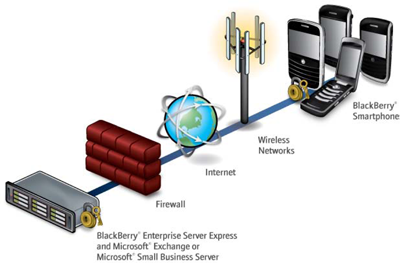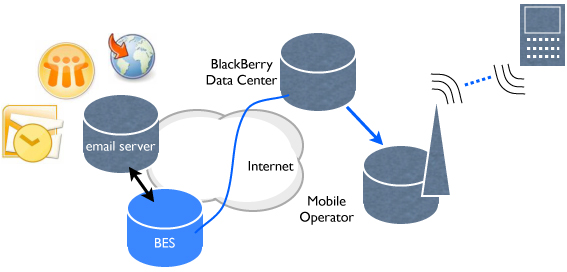 Developing terrific experiences for users on mobile devices is a non-trivial software and experience engineering effort. To make matters worse, the devices have such different screen sizes, development environments, soft-keys and operating metaphors that make developing an application, especially one meant to be a ‘unifying’ application like mobile UC, tricky to say the least. Daunting is another word to describe the product manager’s first glimpse at the task facing them. That’s why most people really want to stay away from the client development. It’s a constant cycle of tweaking and tuning and updating on a variety of ever-shorter lifecycle products. People aren’t hanging onto their mobile phones as long as they used to, and some vendors like Apple are big on updating the device OS software to add functionality to the device too, which can make some older apps grind to a crawl or worse, stop altogether or cause the device to crash. Yikes!
Developing terrific experiences for users on mobile devices is a non-trivial software and experience engineering effort. To make matters worse, the devices have such different screen sizes, development environments, soft-keys and operating metaphors that make developing an application, especially one meant to be a ‘unifying’ application like mobile UC, tricky to say the least. Daunting is another word to describe the product manager’s first glimpse at the task facing them. That’s why most people really want to stay away from the client development. It’s a constant cycle of tweaking and tuning and updating on a variety of ever-shorter lifecycle products. People aren’t hanging onto their mobile phones as long as they used to, and some vendors like Apple are big on updating the device OS software to add functionality to the device too, which can make some older apps grind to a crawl or worse, stop altogether or cause the device to crash. Yikes!
The product manager for mobile UC can’t say, let’s only develop for this class or brand of device. Sadly, they’ll be missing huge swaths of the addressable market and may even preclude themselves from addressing any customer needs since most companies want a uniform application to work in their heterogeneous device environment.
That’s where Keynote Systems has focused its considerable innovation prowess. Originating in the online availability and performance measurement arena, Keynote has developed a suite of probes, products and services for monitoring and testing applications, content and networks – mobile and Internet – including applications running in emulation mode on any mobile operator network, on any device.
The recent release of Mobile Application Perspective 4.0 offers the ability to emulate your content running on 1,600 different mobile devices using either a ‘MAP over Air’ or ‘MAP over Network’ configuration. Operations teams can capture mobile device screenshots to diagnose and troubleshoot the user experience. With the MAP over Air implementation the mobile operator’s proxy servers are integrated into the session path so that the engineering team can see exactly what the user sees.
The MAP over Network service is better suited to testing the content distribution network, before the mobile operator gets it and does so from 50 cities around the world. Performance bottlenecks, and periods of degradation are flagged and highlighted for engineering response teams.
Keynote also presented three use cases that I found interesting:
- “Banking Web site: A bank has an iPhone-customized mobile Web site. Customers often use the site to check balances, pay bills and transfer funds. The bank needs to monitor popular ‘business transactions’ that customers often perform on a mobile device. With MAP 4.0 the bank can accurately emulate the iPhone and execute the same transactions as mobile users of the bank’s Web site. Performance is constantly measured each time the use case is executed with a MAP over Air connection, sending alerts as soon as the transaction starts to fail or performance levels fall below a certain threshold set by the customer monitoring the performance of their Web site as accessed by mobile devices. Using MAP 4.0’s “MAP over Air” connection, the bank is able to identify and resolve performance issues quickly, and avoid negative customer impact.
- E-Commerce Web site: a leading e-commerce Web site is seeing more users purchase from mobile devices. They need to constantly monitor the end user performance of their Web site on various mobile devices. Every failure or even a slow download of the Web site to a mobile device can result in loss of revenue. A MAP over Air connection helps the site operator to constantly monitor the performance and quickly act on performance degradations. The e-commerce site is constantly evolving which results in performance variation. Operators of the e-commerce Web site see performance variations based on the mobile operator network. MAP over Air performance data enables the site operator to understand the impact of site changes and helps them to constantly optimize the Web site from a mobile end user’s point of view.
- A Web/IT Operations Team: Web/IT Ops teams need to monitor the availability of their Web servers delivering content to mobile devices. Monitoring true end user experience over the air accurately tracks any performance issues seen by the end user, but it does not always pinpoint the root cause of the failure – mobile operator-related versus Web server related. Members of the Web/IT operations team do not want to be woken up at night for performance failures that are caused by the failure of the mobile operator’s network. They need a mobile monitoring tool that alerts them only when their Web servers sending mobile content fail. Keynote MAP 4.0’s “MAP over Network” connection performs operational monitoring by downloading mobile content directly over the Internet backbone without going over the mobile operator’s network. This form of monitoring is critical to monitoring the entire backend system and provides alerts when the end user failures are not caused by the mobile operator’s network, but are due to the failure of the provider’s Web content delivery infrastructure.” (source: company press release).









